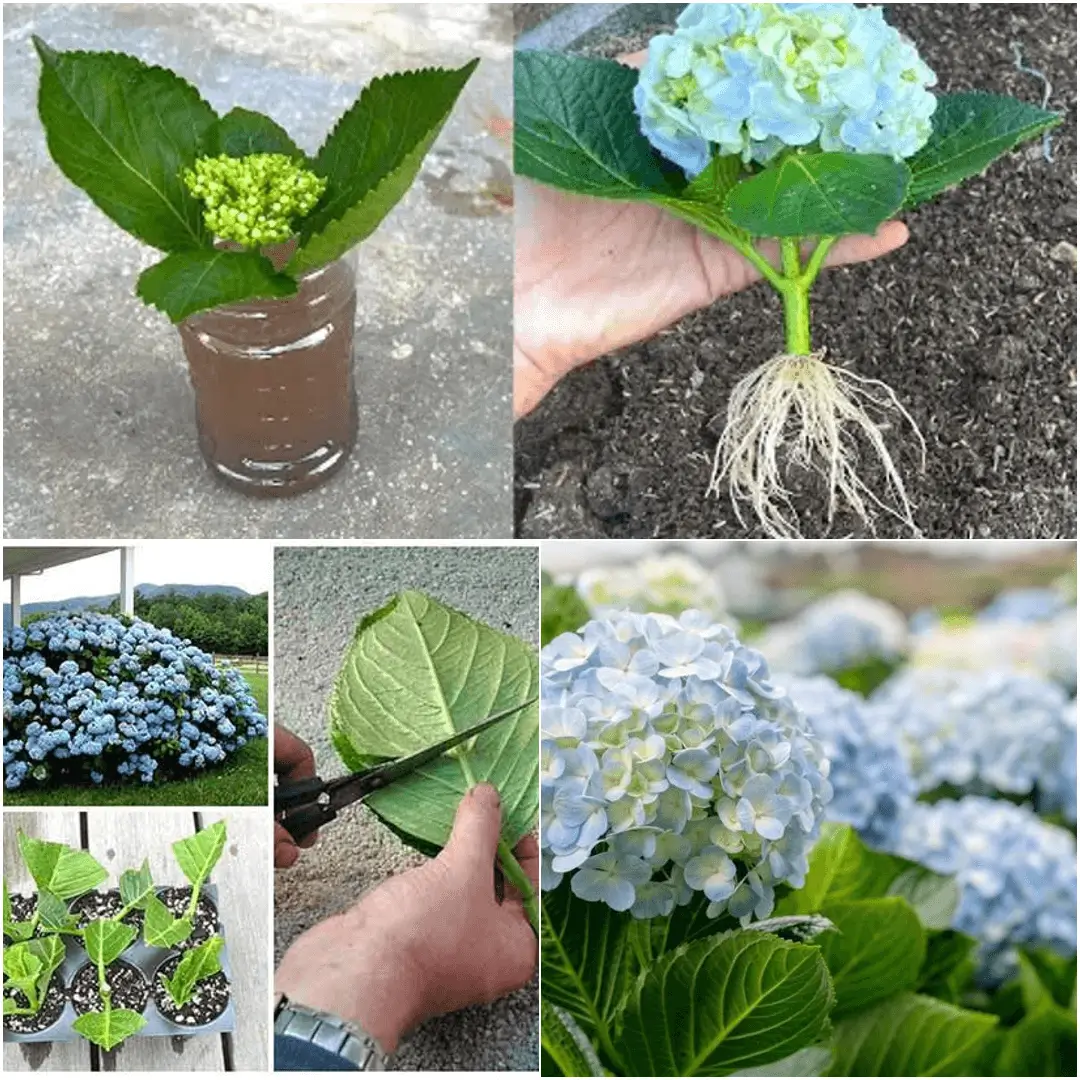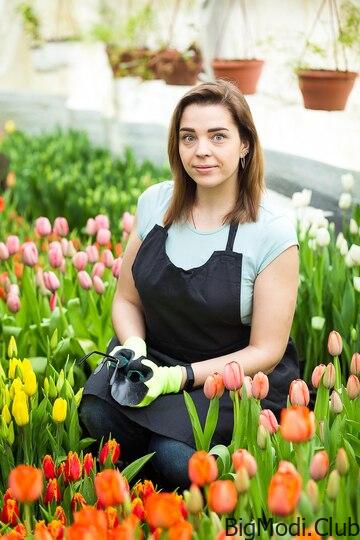Growing hydrangeas can be a rewarding endeavor for any gardener, whether you’re a seasoned pro or just starting out. These beautiful, deciduous shrubs are known for their stunning blooms that can brighten up any garden space. In this guide, we’ll delve deep into everything you need to know about growing hydrangeas, including their types, planting tips, care techniques, and even how to propagate them from cuttings. Let’s dive in!
Overview of Hydrangeas
Hydrangeas are much-loved for their versatility and striking appearance. These deciduous hardy shrubs come in various shapes and forms, and some even have climbing abilities!
Types of Hydrangeas
- Flower Shapes: The blooms of hydrangeas can range from large, rounded balls to elegant cone shapes. The most recognizable varieties include mopheads and lacecaps, which display a beautiful array of colors, including shades of white, blue, and pink.
- Varieties:
- Compact Varieties: Perfect for smaller spaces or containers, compact hydrangeas can add beauty to patios and balconies.
- Double-Flowered and Bi-Coloured Options: These varieties bring an extra layer of charm with their unique petal arrangements.
- Color-Changing Varieties: Some hydrangeas change color as their flowers mature, providing a dynamic visual display in your garden.
- Old and New Wood Bloomers: Certain types bloom on both old and new wood, offering an extended flowering season.
Whether you’re looking for traditional garden vibes or a contemporary twist, there’s a hydrangea variety that will suit your style!
Where to Plant Hydrangeas
Choosing the right location for your hydrangeas is crucial for their growth and health.
Soil Requirements
Hydrangeas thrive in moist, free-draining soil. They can adapt to both alkaline and acidic soils, but the pH level can affect the color of the flowers. For instance, some plants that typically bloom pink may produce blue flowers in acidic conditions.
Shade Preference
These beautiful shrubs prefer dappled shade. While they need sunlight, be cautious of south-facing positions where the soil may become too dry. If you’re dealing with a shaded vertical surface, such as a north-facing wall, consider planting a climbing hydrangea like Hydrangea anomala subsp. petiolaris.
Frost Protection
Hydrangeas can be vulnerable to frost damage, especially in spring. To protect them, avoid planting in frost pockets and place them away from strong winds. This will help keep your plants safe during those chilly nights!
When to Plant Hydrangeas
Timing your planting is key to ensuring your hydrangeas thrive.
Best Time for Planting
The best time to plant hydrangeas is in spring or autumn, when the soil is warm and moist. If you decide to plant in summer, keep in mind that these plants will require more frequent watering to help them establish their roots before the heat of summer fully sets in.
How to Plant Hydrangeas
Now that you’ve selected the right location and time to plant, let’s get into the nitty-gritty of planting hydrangeas.
Preparation for Planting
If your soil is light, it’s a good idea to bulk it up with moisture-retaining organic matter like well-rotted manure or compost before planting. This will help keep the roots happy and hydrated.
Watering Before Planting
Before you place your hydrangea in the ground, give the plant a good drink. Water it about an hour before planting to ensure it’s well-hydrated.
Planting Technique
Here’s a pro tip: Never plant a hydrangea deeper than it was in its original pot. This helps prevent issues with rot and encourages healthy growth. After planting, water it in well to settle the soil around the roots.
Mulching After Planting
Once you’ve planted your hydrangea, it’s time to mulch. A layer of mulch—preferably leaf mould, well-rotted manure, or compost—will help retain moisture and suppress weeds, giving your hydrangeas the best chance to thrive.
Hydrangea Care Tips
Once your hydrangeas are planted, how to care for hydrangeas is essential for long-lasting blooms and healthy growth.
Watering Regularly
During the first growing season, it’s important to water regularly, even weekly if necessary, to help the roots establish. Use rainwater if possible, as this will help maintain the blue color in your flowers.
Mulching Annually
Mulch your hydrangeas every spring. This keeps moisture in the soil and prevents weeds from taking over, allowing your plants to focus their energy on growing.
Fertilizing Wisely
Generally, it’s best to avoid feeding hydrangeas unless you’re looking to change the color of the flowers. For blue flowers, use a fertilizer that is low in phosphorus and high in potassium.
How to Prune Hydrangeas
Pruning hydrangeas can seem intimidating, but with the right knowledge, it can be straightforward.
Pruning Hydrangea macrophylla (Mophead and Lacecap)
For Hydrangea macrophylla, prune in mid-spring. Avoid hard pruning since these types bloom on old wood, and hard pruning could mean losing those lovely summer flowers. Traditionally, gardeners leave the old flowers on over winter as they provide protection for new growth.
When pruning, simply cut back the flowerhead to just above the top set of plump buds beneath the dead flowerhead. This is where the new flowers will form.
Pruning Hydrangea paniculata and Hydrangea arborescens
For Hydrangea paniculata and Hydrangea arborescens, early spring is the best time for pruning. You can cut these back more vigorously since they produce flowers on new wood. Aim to cut back last year’s growth to a healthy framework between 30cm and 60cm in height.
Pruning Climbing Hydrangea (Hydrangea petiolaris)
For climbing hydrangeas, prune in the summer after flowering. This involves cutting back the flowered shoots to a pair of new buds, encouraging fresh growth for the following season.
How to Propagate Hydrangeas from Cuttings
If you want to expand your hydrangea collection, propagating them from cuttings is a fun and rewarding process!
Taking Cuttings
To start, take softwood hydrangea cuttings in spring from young, non-flowering shoots. In the morning, look for shoots that have three sets of leaves.
Preparing Cuttings
Remove the two sets of lower leaves and shorten the stem just below a node. This will help stimulate root growth.
Planting Cuttings
Insert the cuttings into a pot filled with gritty compost or a multi-purpose compost that has plenty of perlite. You can place more than one cutting in a pot as long as the leaves don’t touch. Water them in well and cover the pot with a clear plastic bag to create a mini greenhouse effect.
Providing the Right Environment
Keep your cuttings in a shady spot, ideally in an unheated greenhouse, until you see clear signs of growth. This may take a few weeks, but once the roots establish, you can pot them up into larger containers.
Problem Solving
Even the best gardeners face challenges! Here are some common issues with hydrangeas and how to address them.
Lack of Flowers
If your hydrangeas aren’t flowering, it could be due to pruning at the wrong time of year. Make sure you know which type of hydrangea you have and follow the appropriate pruning advice mentioned earlier.
Frost Damage
Brown or blackened foliage or buds in spring often indicate frost damage. To prevent this, plant your hydrangea in a sheltered spot and leave the faded flowerheads on over winter. If your plant is affected, give it time to recover; it’s unlikely to have killed the entire plant.
Pest Issues
Watch out for pests like hydrangea scale or vine weevils. If you notice small, brown blobs on your plants or chunks missing from the leaves, you may have a pest issue. Apply organic insecticides based on plant oils or fatty acids for severe cases.
Notable Varieties of Hydrangeas
While hydrangeas are beautiful across the board, here are some notable varieties to consider for your garden:
- Hydrangea macrophylla ‘Ayesha’ – Known for bold colors and unusual curled edges.
- Hydrangea macrophylla ‘Zebra’ – Features large white mophead flowers and striking black stems.
- Hydrangea macrophylla ‘Miss Saori’ – A double-flowered winner with pink and white blooms.
- Hydrangea macrophylla ‘Veitchii’ – A lacecap variety that’s free-flowering and hardy.
- Hydrangea macrophylla ‘Jogasaki’ – Delicate pink and lilac blooms with vibrant autumn leaves.
- Hydrangea serrata ‘Bluebird’ – Offers a mix of pink and blue florets with fiery fall foliage.
- Hydrangea paniculata ‘Phantom’ – Known for its large, conical flowerheads.
- Hydrangea arborescens ‘Annabelle’ – This classic variety is adored for its massive white flower clusters that can reach up to 12 inches in diameter. 9.
- Hydrangea quercifolia – Also known as oakleaf hydrangea, it features beautiful foliage that turns vibrant shades of red and purple in fall. 10.
- Hydrangea paniculata ‘Limelight’ – Famous for its chartreuse blooms that gradually turn pink, providing a stunning transition throughout the season.
These varieties not only enhance the visual appeal of your garden but also offer different blooming times and color changes, allowing you to enjoy hydrangeas throughout the growing season.
Growing hydrangeas can be a delightful journey filled with vibrant colors and lush blooms. Whether you choose to plant them in your garden or in containers, these beautiful shrubs can thrive with the right care and attention. By understanding their requirements for soil, sunlight, and water, and mastering the art of pruning and propagation, you can enjoy their stunning beauty for years to come. So go ahead, plant some hydrangeas, and let your garden bloom with these lovely blooms!
FAQs:
Where do hydrangeas grow best?
Hydrangeas thrive in moist, well-draining soil that can be either alkaline or acidic. They prefer dappled shade, making spots with partial sunlight ideal. Avoid areas that receive direct, hot sunlight, particularly south-facing positions with dry soil. It’s also essential to protect them from strong winds and frost pockets, as young growth can be susceptible to damage.
Can you grow hydrangeas from cuttings?
Yes, you can successfully grow hydrangeas from cuttings! The best time to take cuttings is in spring when the plants are actively growing. Use softwood cuttings from young, non-flowering shoots. Remove the lower leaves, shorten the stem just below a node, and insert the cuttings into a pot filled with gritty compost. Cover the pot with a clear plastic bag to create a humid environment and keep it in a shady spot until you see new growth.
How do you start growing hydrangeas?
To start growing hydrangeas, begin by selecting a suitable location in your garden that provides moist, well-draining soil and dappled shade. Prepare the soil by amending it with organic matter if necessary. Water the hydrangea well before planting, and dig a hole that allows the plant to sit at the same depth as it was in its original pot. After planting, mulch with leaf mould, well-rotted manure, or compost, and ensure consistent watering, especially during the first growing season.
What month is best to plant hydrangeas?
The best months to plant hydrangeas are spring or autumn. Planting during these times ensures that the soil is warm and moist, which helps establish the roots before summer heat or winter cold sets in. While summer planting is possible, it requires more frequent watering to prevent the plant from drying out before its roots can take hold.


